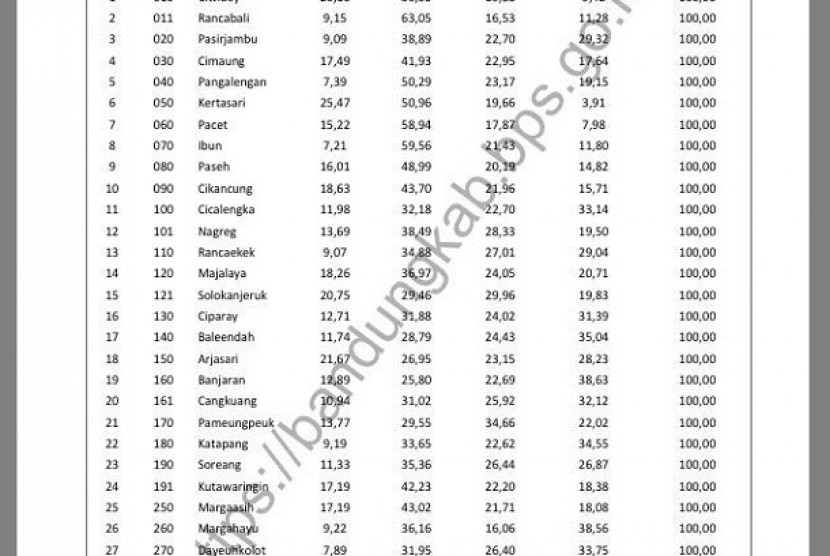

Our previous data showed that the annual deforestation rates of mangrove in South Sulawesi was between 1% and 5 % during the period 1979 - 2012 (Malik et al. During the period 1950 - 2005, mangrove covered area in South Sulawesi had declined about 88 thousand hectares, and only 12 thousand hectares were saved (Bakosurtanal 2009). These forests distribute in the coastal area of Makassar City and Districts of Maros, Pangkep, Barru, Pinrang, East Luwu, Luwu, Bone, Sinjai, Takalar, Jeneponto, Bantaeng, and Bulukumba. The mangroves of South Sulawesi province are one of the essential areas for carbon storage in Indonesia (Malik et al.
BADAN PUSAT STATISTIK KABUPATEN MAROS DRIVER
Over-exploitation for many purposes, such as commercial logging, fuelwood, charcoal, and conversion into other land-uses, primary into aquaculture ponds, have trusted as a driver of mangrove losses (Kusmana 2015 Murdiyarso et al. However, deforestation and degradation rates at up to 0.39% per year since 2000 had contributed to an annual carbon emission of about 0.21-0.45 Pg CO 2 to the atmosphere (Hamilton and Friess 2018). Also, Hamilton and Casey (2016) calculated that the deforestation of worldwide mangroves extent became lower during 2000 - 2012 (from 17.3 million to 16.4 million or approximately 5%) due to increase policy intervention to rehabilitate this ecosystem. (2017) reported that the most significant regional mangrove loss was occurred in Southeast Asia during the period 1996-2010 (approximately 50%), corresponding to 18.4% of the global mangrove area. Since 1980, nearly half of the total mangrove covers in the world had lost (FAO 2007).

However, mangroves are currently being degraded and deforested at alarming rates (Murdiyarso et al. 2011) and contribute about half of the total blue carbon emissions from coastal ecosystems (Pendleton et al. Mangroves are among the most significant carbon-rich forests in tropical areas (Donato et al. 2011), these forests could store up to 4.19 Pg C in 2012 (Hamilton and Friess 2018). Despite mangrove areas occupied at less 1% of the world's tropical forest areas (Giri et al. Mangroves store carbon in their above-belowground biomass through the photosynthesis process and also in soil by sedimentation process (Howard et al. Mangrove forests play an important role in climate change mitigation by acting as sinks of carbon (Murdiyarso et al. Besides, halting the expansion of settlements and aquaculture ponds are worthwhile options to maintain and possibly increase biomass carbon stocks. Therefore, preservation of intact mangrove and restoration of disturbed forests with pay attention to planting distance should consider. However, low planting distance in mangrove rehabilitation and conversion of mangrove area into settlements and aquaculture ponds in the last three decades have affected forest structure and biomass carbon magnitudes. The aboveground biomass stored more carbon than the belowground pool. The results showed that the mean values of carbon stocks in above-belowground biomass were 125.48☙3.48 Mg C ha -1 and 60.23±44.87 Mg C ha -1. We used a line transects method for mangrove vegetation survey and determined above-belowground biomass and carbon stock using published allometric equations and a conversion factor, respectively. The objective of this research is to estimate biomass carbon stocks of mangrove rehabilitated areas in Sinjai District, South Sulawesi.

However, this forest remains under considerable high exploitation from the expansion of settlement and aquaculture pond that likely results in much CO 2 release to the atmosphere. Mangrove forest plays a crucial role in climate change mitigation by storing carbon in its above-belowground pools.


 0 kommentar(er)
0 kommentar(er)
